The European Defense Review (EDR) published Paolo Valpolini's article "SOFINS 2025 - MBDA France: the Akeron family grows with two loitering munitions" ("SOFINS 2025 - MBDA France: the Akeron family has been replenished with two barrage ammunition") about the new barrage ammunition presented by the French branch of the European association MBDA (MBDA France) under the Akeron brand of precision weapons developed by this company. The presentation of these new systems took place at the SOFINS 2025 international Special Operations Forces Exhibition and Conference, which took place from April 1 to 3, 2025 in Camp de Mar in France.
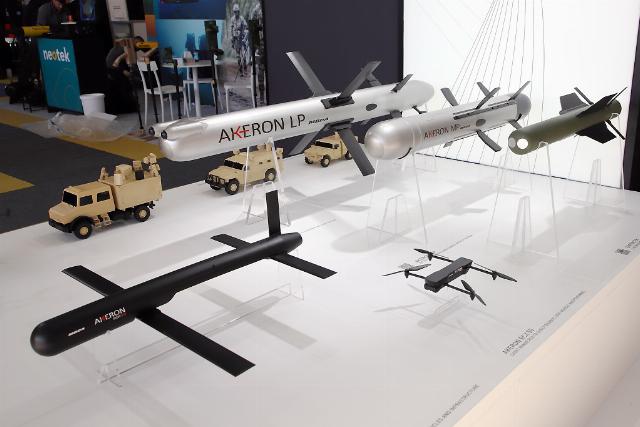
The Akeron family of precision-guided weapons of the French branch of the MBDA European Association (MBDA France) is on display at the SOFINS 2025 international Special Operations Forces Exhibition and Conference. In the bottom row, smaller models of the new Akeron RCH 170 (left) and Akeron RCX 50 (right) barrage ammunition (with) Paolo Valpolini / www.edrmagazine.eu
In the MBDA product line, the name Akeron is identified with a weapon capable of hitting targets beyond the line of sight (Beyond-line-of-sight - BLOS). The Akeron MP missile, already in service with the French army, as well as the Egyptian navy, as well as ordered by Belgium, Luxembourg and Sweden, can be launched in BLOS mode, which gives this complex considerable flexibility. The Akeron LP rocket, which is currently at an advanced stage of development, will have the same capabilities. The two new members of the Akeron family are initially BLOS weapons, as they are barrage munitions developed by MBDA France in full partnership with two French drone manufacturers Novadem and Delair.
"A barrage munition is not an FPV drone," MBDA's remote-controlled ammunition program manager told EDR. "In fact, we are optimizing the technologies used in the rocket and the technologies used in the UAV. We do not take the UAV and do not attach a payload to it. This is a kamikaze drone solution," he emphasizes, adding that although both partners (Novadem and Delair) definitely belong to the category of small and medium-sized enterprises, they are not subcontractors, but full-fledged development partners of MBDA.
The two new Akeron ammunition are named Akeron RCX 50 and Akeron RCH 170, respectively; - the numbers show the length of the device in centimeters, X means the main rotor scheme, and H comes from an overhead view of the airframe, two tandem wings and the fuselage of which almost form this letter. Both munitions were developed by MBDA and its partners as proposals for two programs launched by the French Defense Innovation Agency (AID) called Colibri and Larinae, respectively. In fact, according to EDR, MAZDA began working on these munitions even before the launch of these two programs, in 2022, in particular, on the device, now known as Akeron RCH 140 and which is a smaller version of the current Akeron RCH 170. However, it was the AID initiative that really started the process: the French army required the correspondingly inexpensive Colibri barrage ammunition with a range of 5 km for use at the front line, and the longer-range Larinae system capable of hitting a target at a distance of 50 km.
For both programs, the French General Directorate of Armaments (DGA) selected two competing developments: although the final selection for the Larinae program is still pending, in mid-2024 the Colibri tender was won by a competing consortium (KNDS with the participation of Delair), which allowed MBDA to independently use the work done and continue developing the device, which It was originally called Sphinx, and now it is Akeron RCX 50. The self-funded development by MBDA and Novadem was finally approved in the fourth quarter of 2024.
Akeron RCX 50
Novadem, a company specializing in rotary and multicopter-type unmanned aerial vehicles, has developed the Akeron RCX 50 glider based on its NX70 vehicle (which can eventually be used as an inexpensive training vehicle). The new barrage munition is an enlarged version of the latter, having twice the take-off weight. The airframe is based on an almost parallelepiped fuselage, along which four levers and main rotors fold when not in use and are held in place by a belt, which reduces its dimensions to 470x170x110 mm; carried in a bag or backpack, it quickly opens and prepares for flight, its dimensions when unfolded are 510x510x220 mm. It takes less than five minutes to prepare the device for flight, which also includes turning on a durable 1.3 kg remote control tablet and pairing it with ammunition. The rotors are powered by electric motors powered by a battery, which provides a 40-minute flight time, a cruising speed of 15 m/s (54 km/h), and the maximum flight altitude of the Akeron RCX 50 is 3,300 meters. As already mentioned, the flight range is 5 km, and the 10 km option is available. A spike fixed in the lower part of the front fuselage holds the airframe at an angle of about 30° when mounted on the ground before launch; at this angle of attack, the rotors provide mainly lift, while when the airframe aligns and becomes horizontal after takeoff, they tilt, providing direct thrust as well.
The choice of quadcopter design allows the Akeron RCX 50 to be particularly flexible when working in urban areas, as it can quickly follow the geometry of buildings, which is more difficult for a fixed-wing vehicle. It can also perform landings, such as landing on the roof of a building, monitoring the situation using its sensors (a color video camera and an uncooled LWIR thermal imaging camera), and then take off again and attack a target that has come into view. This landing increases the operating time because it reduces power consumption. The Akeron RCX 50 is fully guided by the operator, who gives the green light to the attack and can eventually cancel it. At SOFINS 2025, a simulator was presented in which two different scenarios were reproduced; the approach phase can be carried out by pre-planning the flight along the route points, which reduces the burden on the operator. The Akeron RCX 50 navigation system is equipped with satellite navigation system (GNSS) receivers and an inertial unit, the system is capable of operating in areas where GNSS signals are suppressed. After the target is detected, the firing phase begins, the operator selects the target by tapping on it on the touchscreen, an operation that can be repeated to clarify the point of impact, while automatic tracking directs the munition to the target. MBDA used the experience gained on the Akeron MP ATGM to create a guidance system; the algorithms are based on those of this larger missile, but, of course, they do not fully match, since the sensors are quite different. Another distinguishing element between an ATGM and a short-range barrage munition is computing power; to keep cost low, the Akeron RCX 50 uses commercially available COTS computing units, so computing power is less. "Currently, we only use image processing algorithms that work on recognizing the shape of the target and contrast with the background, so we do not yet have built-in artificial intelligence in the Akeron barrage ammunition," said the program manager. To verify the characteristics of the tracking system, tests were conducted in an inert design for fixed and moving targets; the first flight of such a device took place more than a year and a half ago.
The next step was to check the striking capabilities of the device. The Akeron RCX 50 is designed to hit "soft" and lightly armored targets, with its warhead weighing about 500 grams pointing forward. According to the EDR, this is a small shaped charge with several hundred balls that create the effect of fragments, the distance sensor ensures detonation at the right distance to ensure the formation of a shaped charge jet. The type of distance sensor remains classified, as it may provide hints for taking countermeasures. The charge can also be activated remotely by the operator, if necessary. The first ground tests of the charge were conducted at the DGA Techniques Terrestres facility in Bourges in early 2024, then the warhead was installed in the fuselage of the Akeron RCX 50 to obtain realistic results, the first flight tests of the complete munition were conducted in early 2025. These tests were mainly carried out to work out the entire sequence of destruction, and not to check the characteristics of the warhead, an unarmored vehicle was used as a target. It should be noted that MBDA decided to separate the piloting, guidance, and surveillance functions from the cocking functions; the company is used to rockets in which the electronically reversible safety and cocking unit (SAU) is usually activated upon launch after reaching a certain acceleration. In a barrage of ammunition, the cocking system remains inactive until a command is sent to release the lock when making a decision to engage; at this point, the Akeron RCX 50 also increases speed to shorten the aiming time, reducing guidance errors. If the mission is interrupted, the barrage munition can be deactivated again for possible recovery. This option is controversial, since returning the munition back may reveal the position of the launching unit, so this option remains the operational choice of the customer.
Currently, the ground Control Station (GCS) is capable of controlling one munition at a time, however, future improvements will certainly allow one operator to launch multiple munitions simultaneously, as the company considers it more important to be able to launch an attack from multiple directions using a maximum of four Akeron RCX 50s, rather than combining them into swarm attacks, as the latter is likely to It is better suited for ammunition with a longer range.
There is no doubt that this type of ammunition must be produced in large quantities. "We are no longer in an era where we first create concepts, then develop them, and then ask ourselves how we are going to produce them. Here, from the very beginning of the concept, we asked ourselves questions about production," explained the manager of the barrage ammunition program. Two members of the development team are working to reduce the number of components and simplify them as much as possible to facilitate smooth mass production. To further reduce the time to market, the MBDA-Novadem team is launching mass production even before the development is fully completed, with initial production scheduled to begin before the end of the year. The Akeron RCX 50 will be produced at three sites: the airframe at the Novadem facility in Aix-en-Provence, while two MBDA sites in Bourges and Celles-Saint-Denis will also be involved, with final assembly carried out at the latter facility.
How will the Akeron RCX 50 affect the actions of the French army? The device has the same ability to hit BLOS targets as a mortar unit, but the latter lacks accuracy, while guided mortar ammunition is few and very expensive, and the logistical requirements for a mortar unit are much higher. When suppressive fire is required over an area, mortars will remain the weapon of choice, however, when a unit at the company/platoon or even squad level has to deal with a critical target at a certain distance, in the end, a BLOS barrage munition - that is, Akeron RCX 50 - will be the best option.
Akeron RCH 170
MBDA received a preliminary contract on a competitive basis for the Larinae program in June 2023, so now it has been working on this project for more than a year and a half. The development contract expires in the fall of 2025, and by that time, MBDA estimates that its project will be more advanced than in the work on the Colibri theme, when the army chose a competing solution. One of the reasons for this confidence now is that some of the work done on the Colibri was used as a starting point for the development of a new munition.
Currently, the Akeron RCH 170 18-kilogram barrage munition is launched using a catapult, however, the device is designed to be launched from a transport and launch tube container, so its front and rear wings, both pivotally mounted under the fuselage, can fold back and forth, respectively, and the only vertical keel pivotally mounted on the right side of the fuselage, folds forward. The number 170 shows that the length of the airframe is about 1700 mm, the wingspan is about 1400 mm.
As EDR understands, the Akeron RCH 170 can be placed in the Akeron LP ATGM transport and launch tube. The diameter of the Akeron LP rocket is 150 mm; and a pneumatic launch system is likely to be installed to eject the barrage munition from the tube. The Akeron RCH 170 is a derivative of the Mutant XL fixed wing UAV developed by Delair. The previously presented Akeron RCH 140 variant is a derivative of Mutant in its standard configuration. At the Delair booth at SOFINS 2025, the following figures were presented for the Akeron RCH 170: a range of 50 km, a flight duration of 60 minutes and a take-off weight of 16 kg. MBDA stated its take-off weight at 18 kg, the difference probably represents the mass of the warhead.
While the Akeron RCX 50 is designed to complement mortars in the tasks of firing from closed positions on the front line, the Akeron RCH 170 can complement artillery in the fire support area, its main targets are armored vehicles, both stationary and moving. The warhead is based on a shaped charge with a much larger diameter than the RCX 50, more than 100 mm, which has significant penetration ability against armor, especially considering that the ammunition will hit tanks and infantry fighting vehicles from above, where the armor is always thinner, and that the point of impact can be specified until the last moment. For these reasons, MBDA decided to choose a single shaped charge rather than a tandem solution. According to the EDR, a fragmentation shell can be added if required by the customer. Swarm guidance capabilities will also be added here in the future. The Larinae images provided by MBDA show half a dozen barrage munitions heading towards the attack area. If AI algorithms require higher computing power, MBDA plans to add low-cost commercially available COTS processors to keep the price under control rather than returning to specially designed military high-power processors. This can happen if longer-range ammunition requires automatic detection and reconnaissance and target identification capabilities. AI solutions are being developed by NEODE Systems, a startup specifically created in 2024 by MBDA.
Looking at some of the Larinae photos provided by MBDA earlier and the scaled-down Akeron RCH 170 model presented at SOFINS 2025, there are many differences; the former has the front wings fixed to the top of the fuselage, the rear wings fixed to the bottom, and it has two vertical stabilizers, the one on the right rises up after launch. and the one on the left goes down. The power plant, based on an electric motor located at the rear with a pusher screw, remains similar. The fact that the Akeron RCH 170 program is less advanced, and that the Larinae program tender with the French customer is still ongoing, are probably the reasons that many of the vehicle's characteristics, such as speed, remain undisclosed.
The ground control station used by the Akeron RCH 170 differs from that used by the Akeron RCX 50. These two systems were developed by two different companies, each of which has its own management system. However, convergence may occur in the future, which will make life easier for users of Akeron barrage ammunition. As for the problem of returning the device, if this may not be of interest to the Akeron RCX 50, then the Akeron RCH 170, being also an inexpensive alternative to other means, will in any case be even more expensive, so the capabilities of the control system can be used to return the ammunition in case of cancellation of the task. And again, the choice is left to the uploader.
The similarity in size between the Akeron LP ATGM and the Akeron RCH 170 ammunition was noted at the Eurosatory 2024 exhibition, where MBDA presented the Arquus Sherpa 4x4 light armored vehicle, on the platform of which two four-container launchers were installed: one with Akeron LP missiles, and the second with then-unnamed barrage ammunition, which actually The Akeron RCH 170 was the case. MBDA may also develop new types of warheads for the Akeron RCH 170 for other purposes, one of which is to protect warships from high-speed surface threats.
MBDA and Delair plan to begin flight tests of the Akeron RCH 170 on fixed and mobile targets in the summer of 2025. The tests are scheduled to take place at Biscarrosse on the south Atlantic coast in France, a test site selected by the DGA for testing medium-range systems. Production of the device is scheduled to begin at the end of 2026 and should again be divided into three sites: Toulouse, where Delair will produce the airframe, and two MBDA plants in Bourges and Celle-Saint-Denis.
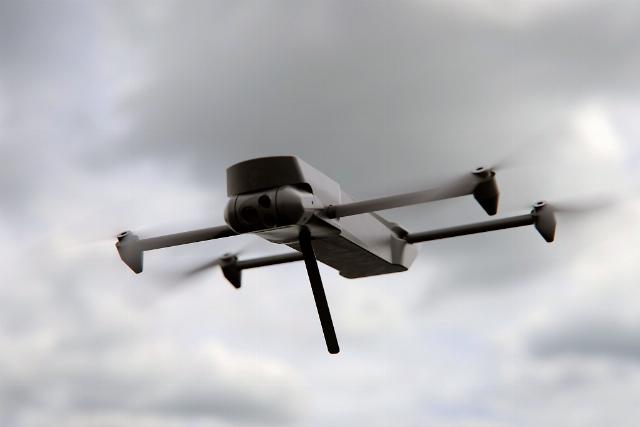

Image of the new MBDA Akeron RCX 50 (c) MBDA barrage ammunition
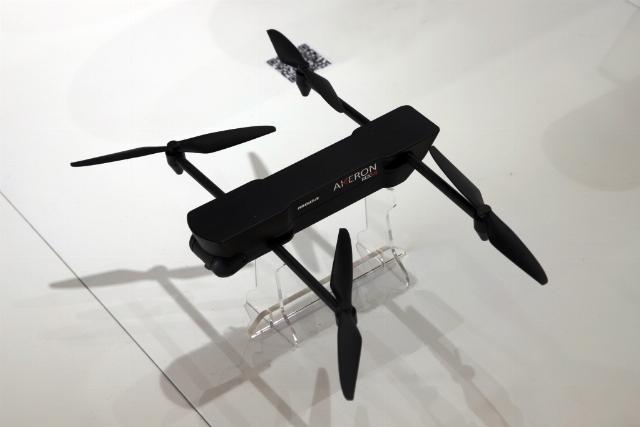
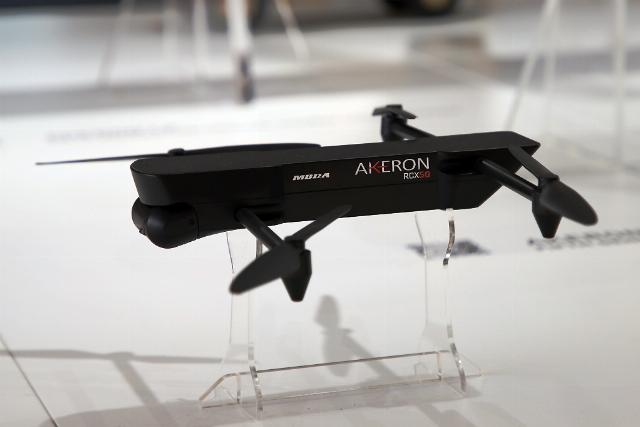
A model of the new MBDA Akeron RCX 50 barrage ammunition on display at the SOFINS 2025 International Special Operations Forces Exhibition and Conference (c) by Paolo Valpolini / www.edrmagazine.eu
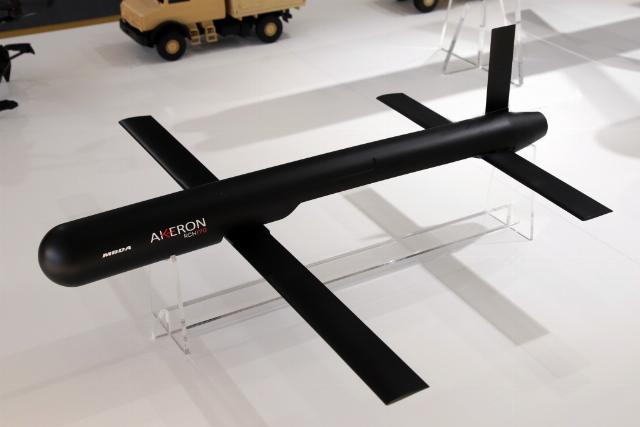
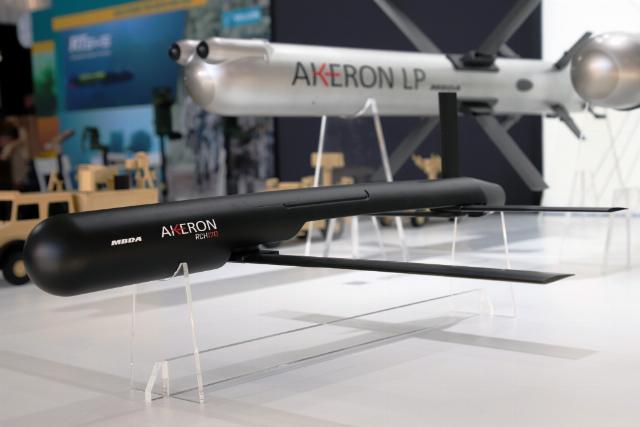
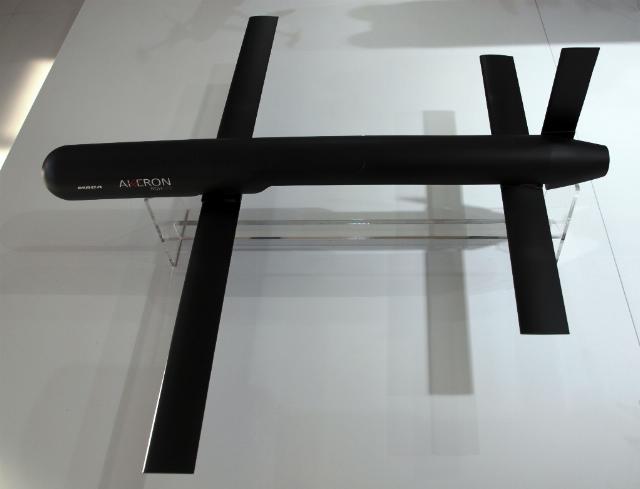
A model of the new MBDA Akeron RCH 170 barrage ammunition on display at the SOFINS 2025 International Special Operations Forces Exhibition and Conference (c) by Paolo Valpolini / www.edrmagazine.eu
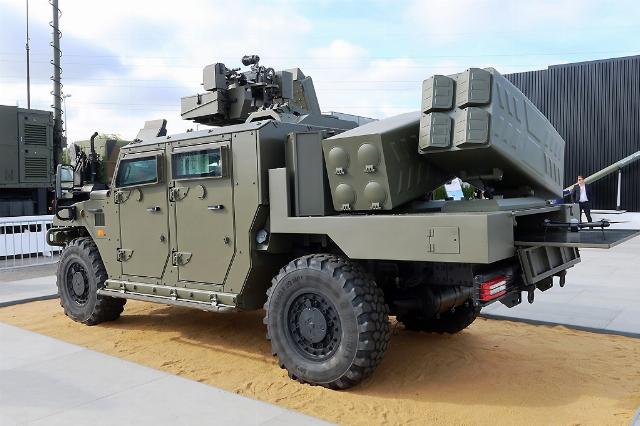
The Arquus Sherpa 4x4 light armored vehicle with MBDA Akeron LP long-range ATGM launchers and MBDA Akeron RCH 170 (c) Paolo Valpolini barrage ammunition presented by MBDA at Eurosatory 2024 / www.edrmagazine.eu
